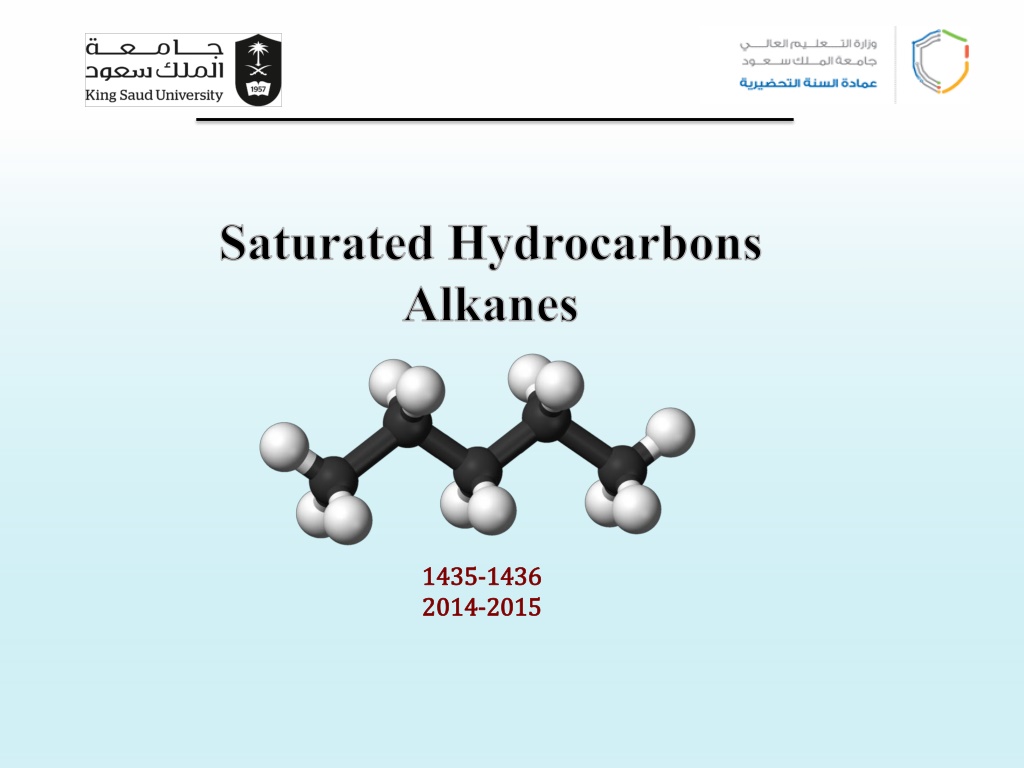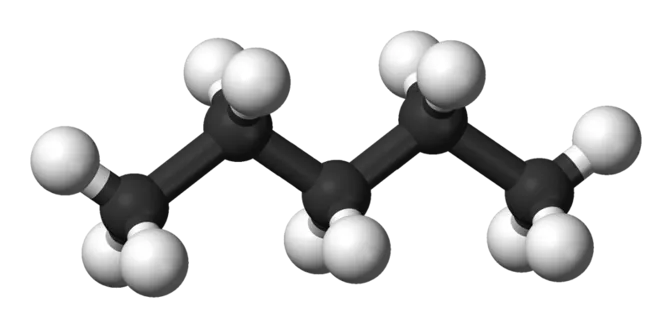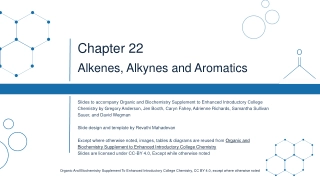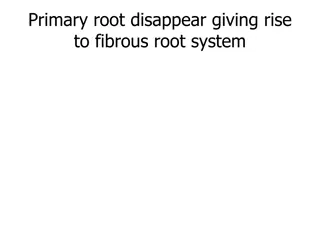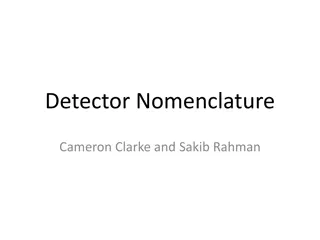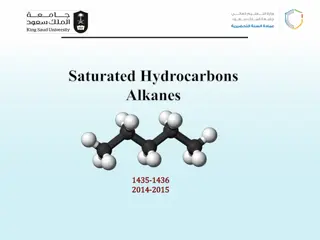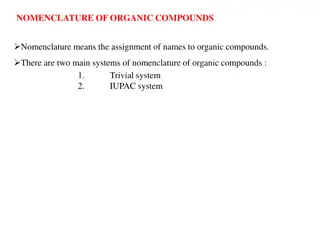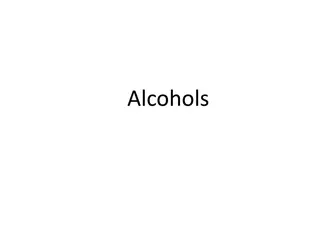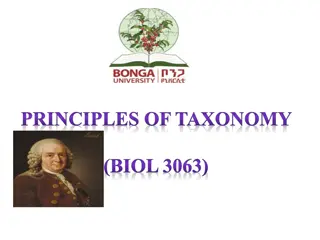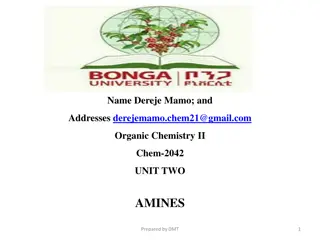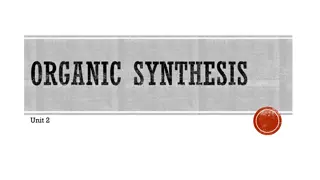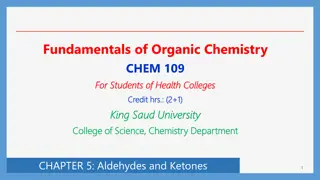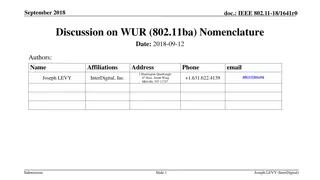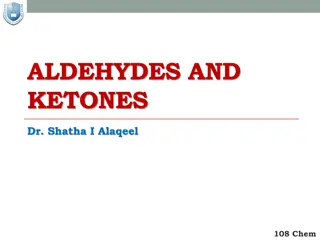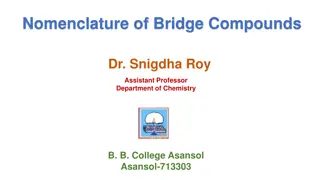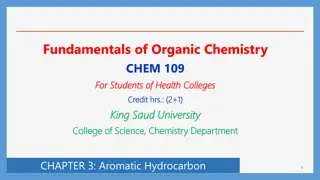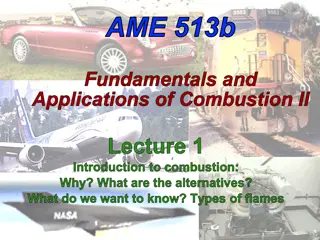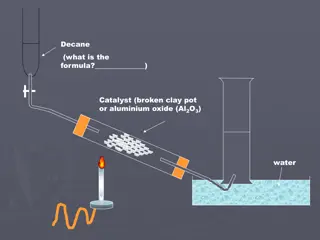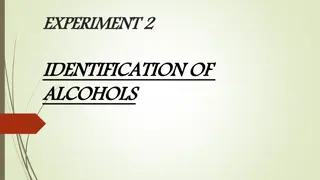Alkanes: Structure, Properties, and Nomenclature
Explore the world of alkanes, saturated hydrocarbons with single bonds. Learn about their classification, molecular formulas, naming conventions, physical properties, and methods of preparation and reactions. Discover the hybridization of carbon in alkanes and delve into the different classes of carbons and hydrogens. Gain insights into the structure of alkanes and their representation through various models.
Download Presentation

Please find below an Image/Link to download the presentation.
The content on the website is provided AS IS for your information and personal use only. It may not be sold, licensed, or shared on other websites without obtaining consent from the author.If you encounter any issues during the download, it is possible that the publisher has removed the file from their server.
You are allowed to download the files provided on this website for personal or commercial use, subject to the condition that they are used lawfully. All files are the property of their respective owners.
The content on the website is provided AS IS for your information and personal use only. It may not be sold, licensed, or shared on other websites without obtaining consent from the author.
E N D
Presentation Transcript
Saturated Hydrocarbons Alkanes 1435 1435- -1436 2014 2014- -2015 1436 2015
Alkanes Learning Objectives Chapter one discusses the following topics and the student by the end of this chapter will: Know the classification of hydrocarbon. Know general formula of simple alkanes and their names from methane to decane. Know the different methods of representing molecular formulas. Know the different classes of carbon and hydrogen atoms. know the hybridization and geometry of alkanes. Know the rules for naming branched chain alkanes and how to use them and isomer. Know the physical properties of alkanes and factors affecting them. Know the different methods used for preparing alkanes. Know the different reaction of alkanes. Know why are cycloalkanes are special class of hydrocarbons. Know the cis/trans isomerism in cycloalkanes. Know the rules for naming cycloalkanes and how to use them. know the halogenation reactions of different cycloalkanes.
Alkanes Hydrocarbons ( C,H) Saturated i.e. contain only single bonds Unsaturated i.e. contain multiple bonds (double or triple) Cyclic Opened chain e.g. Alkenes and Alkynes Opened chain e.g. Alkanes Cyclic e.g. Cycloalkenes and Aromatic compounds e.g. Cycloalkanes
Alkanes Alkanes : CnH2n+2 Name Molecular Formula Methane CH4 Ethane C2H6 C3H8 C4H10 C5H12 C6H14 C7H16 C8H18 C9H20 C10H22 Propane Butane Pentane Hexane Heptane Octane Nonane Decane 4
Alkanes Representation Of Molecular Formulae Ball and stick model dash formula CH3CH2CH2OH Condensed formula Bond line formula 5
Alkanes Drawing Alkanes Methane Ethane CH4 CH3CH3 Propane butane CH3CH2CH2CH3 CH3CH2CH3 n-Pentane CH3CH2CH2CH2CH3 CH3(CH2)3CH3 6
Alkanes Classes Of Carbons and Hydrogens Primary carbon : CH3-CH2-CH3 Secondary carbon : CH3-CH2-CH3 Tertiary carbon : (CH3)2-CH-CH3 Hydrogens are also referred to as 1 , 2 or 3 according to the type of carbon they are bonded to. 7
Alkanes hybridization of carbon in alkane: In the case of a carbon that has 4 single bonds, all of the orbitals are hybrids 4 Molecular orbital (Sp3) Each orbital has 25% s, 75% p Character 8
Alkanes The Structure Of Alkanes In ALKANES, the four sp3 orbitals of carbon repel each other into a TETRAHEDRAL arrangement with bond angles of 109.5 . Each sp3 orbital in carbon overlaps with the 1s orbital of a hydrogen atom to form a C-H bond. 109.5 9
Alkanes Ethane: s orbital (hydrogen) sp3 hybrids orbital (carbon) The length of the band: 1.54 A Angle: 109.5 10
Alkanes Alkyl groups Alkyl groups are formed by loss of a hydrogen atom from the corresponding alkane ( e.g. CH4 Methane 1 H = -CH3 Methyl group ) Alkyl groups are named by dropping the -ane suffix of the alkanes and adding the suffix -yl. Methane becomes a methyl group, ethane an ethyl group, etc. 11
Alkanes Alkyl Groups Propyl group C3H7 (can give two isomeric alky groups) and CH3 CH3-CH2-CH2- CH3-CH Isopropyl n-Propyl 12
Alkanes Butyl Group C4H9 (can give four isomeric alky groups) n-butyl group isobutyl sec- butyl tert-butyl or s.butyl or t.butyl
Alkanes IUPAC Nomenclature Of Branched-Chain Alkanes 1- Locate the longest continuous chain of carbon atoms; this chain determines the root name for the alkane. Sometimes, you may need to go around corners and zigzag to find the longest (parent) chain. (the parent chain is in blue): CH3 H C H3C CH CH2 CH3 CH3CH2CH2CH2CHCH3 CH3CH2CH2CH2CHCH3 H2C CH2 CH3 CH2 CH3 CH3 If the parent chain for example has 6 carbon atoms, therefore, it is a derivative of hexane and if it has 4 carbon atoms it is derivative of butane and so on. 14
Alkanes 2- Number the longest chain beginning with the end of the chain nearer to the substituent. Substituent 5 4 3 6 2 1 4 6 7 5 3 CH3CH2CH2CH2CHCH3 CH3CH2CH2CH2CHCH3 CH3 Substituent 2 CH2 CH3 1 15
Alkanes 3- Use the numbers obtained by application of rule 2 to designate the location of the substituent group. In writing the full name the root name is placed last; the substituent group, preceded by the number indicating its location on the chain, is placed first. 16
Alkanes 4- When two or more substituents are present, give each substituent a number corresponding to its location on the longest chain. The substituent groups are listed alphabetically regardless of their order of occurrence in the molecule. Cl is called chloro, Br called bromo, I called iodo, F called fluoro, NO2 called nitro, CN called cyano 17
Alkanes 5- When two or more substituents are identical, indicate this by the use of the prefixes di-, tri-, tetra-, and so on. In case of deciding alphabetical order of many substituent disregard multiplying prefixes such as di and tri , tetra , penta , . 18
Alkanes 6- When two substituents are present on the same carbon, use the number twice. CH3 H3CCH2 C CH2CH2CH3 CH2 CH3 3-Ethyl-3-methylhexane 19
Alkanes 7- When two chains of equal length compete for selection as the parent chain, choose the chain with the greater number of substituents. 20
Alkanes 8- When branching occurs at an equal distance from both ends of the longest chain, choose the name that gives the lower number at the first point of difference. 21
Alkanes Nomenclature COMMON NAME IUPAC Neopentane Common: Isopentane n- Pentane IUPAC: 2-Methylbutane 2,2-Dimethylpropane Pentane CH2Cl2 CHCl3 CCl4 Common: Methylene chloride Chloroform Carbontetrachloride IUPAC: Dichloromethane Trichloromethane Tetrachloromthane 22
Alkanes Summary Of IUPAC System Of Nomenclature 1. 2. 3. Find and name the longest continuous carbon chain. Identify and name groups attached to this chain. Number the chain consecutively, starting at the end nearest a substituent group. Designate the location of each substituent group by an appropriate number and name. Assemble the name, listing groups in alphabetical order. The prefixes di, tri, tetra etc., used to designate several groups of the same kind, are not considered when alphabetizing. Halogen substituents are easily accommodated, using the names: fluoro (F-), chloro (Cl-), bromo (Br-) and iodo (I-). 4. 5. 6. 7. 23
Alkanes Examples of The IUPAC Rules in Practice By inspection, the longest chain is seen to consist of six carbons, so the root name of this compound will be hexane. A single methyl substituent (colored red) is present, so this compound is a methylhexane. The location of the methyl group must be specified, since there are two possible isomers of this kind. The IUPAC name is thus 3-methylhexane. 24
Alkanes Thus the parent chain will be the one with 4 substituents and the correct IUPAc name of this compound is : 3-Ethyl-2,2,5-trimethylhexane 25
Alkanes Important Notes The common names isopropyl, isobutyl, sec-butyl, tert-butyl are approved by the IUPAC for the substituted groups. Substituent groups are cited in the name in alphabetical order, regardless of their order of occurrence in the molecule. Multiplication prefixes di, tri, ect. and structural prefixes sec., tert. written in italics and separated from the name by a hyphen) are ignored, but prefixes iso and cyclo are not! Thus tert-butyl precedes ethyl , but ethyl preceeds isopropyl 3-ethyl comes before 2,2-dimethyl 4-hexyl comes before 2,3-diisopropyl 3-Tert-butyl comes before 3-isopropyl 7 5 7 5 1 1 9 9 4 6 2 4 3 3 8 10 2 10 6 8 6-tert-Butyl-2-methyl-decane 4-Isopropyl-3-methyl-decane 26
Alkanes Isomerism Molecules which have the same molecular formula, but differ in the arrangement of their atoms, are called isomers. Types of Isomers: 1. Constitutional (or structural) isomers differ in their structural formulas. 2. Stereoisomers differ only in the arrangement of the atoms in space. There are two types of stereoisomerism 1. Geometrical isomerism 2. Optical isomerism 27
Alkanes Structural Isomers Butane and isobutane are isomers two different compounds with the same molecular formula. Specifically, they are constitutional or structural isomers. 28
Alkanes Geometrical isomers Geometrical isomers : same molecular formula and sequence of bonded atoms, but differ in the orientation of their atoms in space occur in organic molecules where rotation around a bond is restricted This occurs in cycloalkanes This occurs most often around C=C The most common cases are around asymmetric non- cyclic alkenes 29
Alkanes Geometric Isomers in cycloalkanes and alkenes A cis isomer is one in which the substituents are on the same side of the C=C or cyclic alkane A trans isomer is one in which the substituents are on the opposite sides of the C=C or cyclic alkane 30
Alkanes Physical Properties Methane, ethane, propane, and butane are gases; pentane through hexadecane are liquids; the homologues larger than hexadecane are solids. The boiling points and melting points of alkanes increase with molecular weight. Branching reduces the boiling point, the more branching the lower the boiling point. Alkanes are non- polar so are immiscible with water , they are soluble in most organic solvents (hexane, benzene, ). Example (Pentane): bp= 9.5 0C bp= 28 0C bp= 36 0C 31
Alkanes Preparation Of Alkanes 1- Hydrogenation of unsaturated hydrocarbon: Ni or Pd or Pt / H2 H3 C CH CH2 CH3 CH2 H3 C Ni or Pd or Pt / H2 H3 C C CH CH2CH3 H3 C 2- Hydrolysis of Grignard reagent Protonolysis of the alkyl Grignard reagents with water or alcohol lead to alkane + Mg2+ Dry ether CH3CH2MgBr CH3CH2Br Grignard reagent H3O+ CH3CH3 + CH3CH2MgBr Mg(OH)Br 32
Alkanes 3- Reduction of alkyl halides a) By sodium metal (Coupling reaction) (Wurtz reaction) + CH3 + H3 C Br H3 C 2 NaBr 2 Na 2 b) By coupling of alkyl halide with lithium dialkyl cuprate (all kinds of alkanes) + (CH3CH2)2CuLi CH3CH2CH3 CH3Br 33
Alkanes Reactions Of Alkanes Chemically alkanes are very unreactive and stable at room temperature towards acids , bases and most reactive metals. Despite their relative inertness ( thus they known as paraffines i.e lacking affinity) , alkanes undergo several important reactions that are discussed in the following section. 1- Halogenation: Halogenation is the replacement of one ormore hydrogen atoms in an organic compound by a halogen (fluorine, chlorine, bromine or iodine). The halogenation of an alkane appears to be a simple free radical substitution reaction in which a C-H bond is broken and a new C-X bond is formed; the reaction takes place in presence of heat or UV light ( no reaction in the dark) Heat or UV light RH + X2 RX + HX X = Cl or Br Reactivity: X2=Cl2>Br2 Alkyl halide 34
Alkanes An atom or group of atoms possessing an odd (unpaired) electron is called a free radical like C A carbocation (or carbonium ion ) is a species that contains a carbon atom bearing a positive charge like C A carbanion is a species that contains a carbon atom bearing a negative charge like C 35
Alkanes Radical substitution reaction UV 2Cl Cl2 Initiation step Cl CH4 HCl + methyl free radical CH3 + Propagation step Cl CH3Cl Cl2 CH3 + + Cl + Cl Cl-Cl Termination step CH3 + Cl CH3-Cl CH3 + CH3 CH3-CH3 Stability of free radical R H R R R R H H 2o R 1o 36 3o
Alkanes If there is one type of the carbon atoms in the molecule (e.g. methane and ethane) H C H H H Cl2 UV UV UV light Cl2 CH3Cl + CH2Cl2 + CHCl3 + CCl4 + 4HCl + or Heat excess Cl2 UV Cl2 Cl2 UV CH3Cl CCl4 CH2Cl2 CHCl3 CH4 If there are different types of carbon atoms in the molecule (Selectivity issue) When alkanes larger than ethane are halogenated, isomeric products are formed. The preferred order for the hydrogens to be substituted is 3 then 2 then 1 . Thus chlorination of propane gives both 1-Bromopropane a s minor product and 2- Bromopropane as major mono-chlorinated product. Br 2 1 1 UV light + Br + Br2 H3C CH3 H3C CH3 H3C CH2 or Heat Propane Major Minor 37
Alkanes Cycloalkane Cycloalkanes are alkanes that have carbon atoms forming rings (called alicyclic compounds). Simple cycloalkanes have the formula (CH2)n, or CnH2n Nomenclature of Unsubstituted Cycloalkanes 1. Cycloalkanes with only one ring: Ring strain Bond angle 60 90 108 109.5 38
Alkanes Naming Substituted Cycloalkanes Count the number of carbon atoms in the ring and the number in the largest substituent chain. If the number of carbon atoms in the ring is equal to or greater than the number in the substituent, the compound is named as an alkyl- substituted cycloalkane i.e. use the prefix cyclo followed by the suffix indicate the number of carbon atoms. For an alkyl- or halo-substituted cycloalkane, start at a point of attachment as C1and number the substituents on the ring so that the second substituent has as low a number as possible. Number the substituents and write the name with the substituents in alphabetical order. 39 39
Alkanes If the alkyl substituent is larger and/or complex, the ring is considered as a substituent on alkane chain. 1 3 CH2CH2CH2CH2CH3 2 1,3-Dicyclohexylpropane 1-cyclobutylpentane If a functional group (OH. CHO, COOH, CO , NH2) is attached to the ring a suitable suffix is used to indicate their presence as appear in the following examples. 40
Alkanes 41
Alkanes Cis-Trans Isomerism In Cycloalkanes Rotation about C-C bonds in cycloalkanes is limited by the ring structure. There are two different 1,2-dimethylcyclopropane isomers, one with the two methyls on the same side (cis) of the ring and one with the methyls on opposite sides (trans). 42 42
Alkanes Reactions Of Cycloalkanes Less stable rings H2/ Ni HBr Br2 Br Br Br H2O/ conc. H2SO4 HO More stable 5 and 6 rings CH3 CH3 Br Br2/UV or Heat Cl Cl2/heat or UV 43
Alkanes Thank You for your kind attention ! Questions? Comments 44
